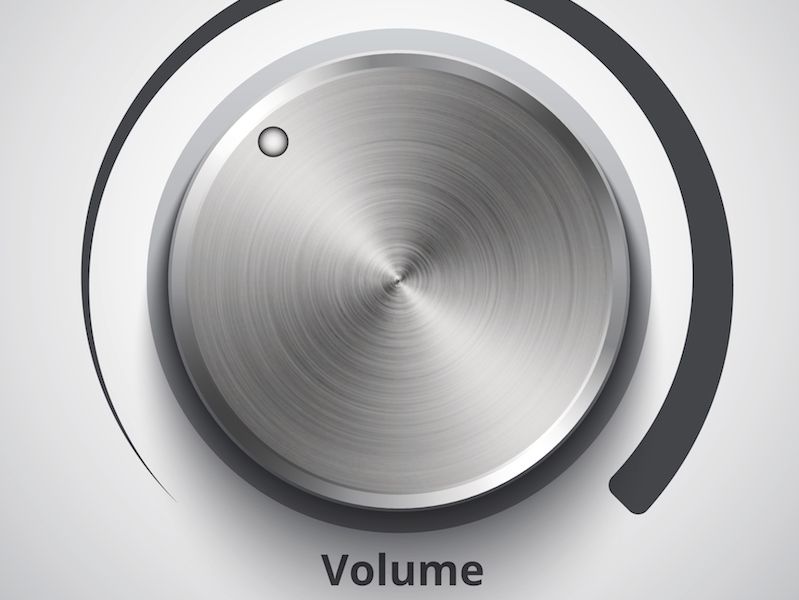
Have you ever gone to the beach and seen one of those “Beware of Shark” warnings? It’s easy to realize that you shouldn’t disregard a warning like that. You may even reconsider swimming at all with a sign like that (if the sign is written in big red letters that’s particularly true). Inexplicably, though, it’s more challenging for people to pay attention to warnings about their hearing in the same way.
Current studies have found that millions of people neglect warning signs when it comes to their hearing (this research specifically looked at populations in the United Kingdom, but there’s no doubt the problem is more global than that). Awareness is a huge part of the issue. Fear of sharks is pretty intuitive. But most individuals don’t have an overt fear of loud sounds. And the real question is, what’s too loud?
Loud And Hazardous Sound is Everywhere Around us
Your ears are not just in danger at a rock concert or on the floor of a machine shop (not to minimize the hearing hazards of these situations). There are potential risks with many every-day sounds. That’s because it’s not only the volume of a sound that presents a danger; it’s also the duration. Even lower-level noises, like dense city traffic, can be damaging to your hearing if you are exposed for more than a couple of hours.
Generally, here’s a rough outline of when loud becomes too loud:
- 30 dB: This is the volume level you would find in normal conversation. At this level, there won’t be any limit to how long you can safely be exposed.
- 80 – 85 dB: An air conditioner, heavy traffic, and a lawnmower are at this level of sound. After around two hours this level of sound becomes dangerous.
- 90 – 95 dB: Think of how loud a motorcycle is. This amount of exposure becomes dangerous in as little as 50 minutes of exposure.
- 100 dB: An approaching subway train or a mid-sized sporting event are at this volume (of course, this depends on the city). This volume can get hazardous after 15 minutes of exposure.
- 110 dB: Do you ever crank the volume on your earpods up as high as it will go? That’s usually around this sound level on most smartphones. 5 minutes will be enough to be unsafe at this volume.
- 120 dB and over: Instant pain and damage can happen at or above this level (think about an arena sized sporting event or rock concert).
How Loud is 85 dB?
Generally speaking, you’re in the danger zone when you’re dealing with any sound 85 dB or above. The problem is that it isn’t always clear just how loud 85 dB is. It’s not tangible the way that a shark is tangible.
And that’s one of the reasons why hearing warnings frequently go ignored, when the sound environment isn’t loud enough to cause pain, this is particularly true. There are a couple of potential solutions to this:
- Get an app: There isn’t an app that will directly protect your ears. But there are several sound level metering apps. It’s difficult to determine what 85 dB feels like so your hearing can be damaged without you even realizing it. The answer, then, is to have this app open and keep track of the noise levels near you. This will help you establish a sense for when you’re entering the “danger zone” (and you will also discern immediately when things are getting too loud).
- Sufficient signage and training: This especially relates to the workplace. Signage and training can help reinforce the significant risks of hearing loss (and the benefits of protecting your hearing). Additionally, just how noisy your workplace is, can be clarified by signage. Training can tell employees when hearing protection is required or suggested.
When in Doubt: Protect
Signage and apps aren’t a foolproof answer. So make the effort to protect your ears if you have any doubt. Noise damage, over a long enough period of time, can bring about hearing loss. And it’s easier than it ever has been to harm your ears (it’s a simple matter of listening to your tunes too loudly).
If you’re listening to headphones all day, you should not turn up the volume past the mid-mark. You require noise blocking headphones if you are continually cranking up the volume to block out background noise.
That’s the reason why it’s more essential than ever to identify when loud becomes too loud. Increasing your own knowledge and recognition is the key if you want to do that. Protecting your ears, using ear protection, or decreasing your exposure, is easy enough. That starts with a little knowledge of when you need to do it.
That should be easier nowadays, too. Especially now that you understand what to be aware of.
Think you could have hearing loss? Schedule an exam.

